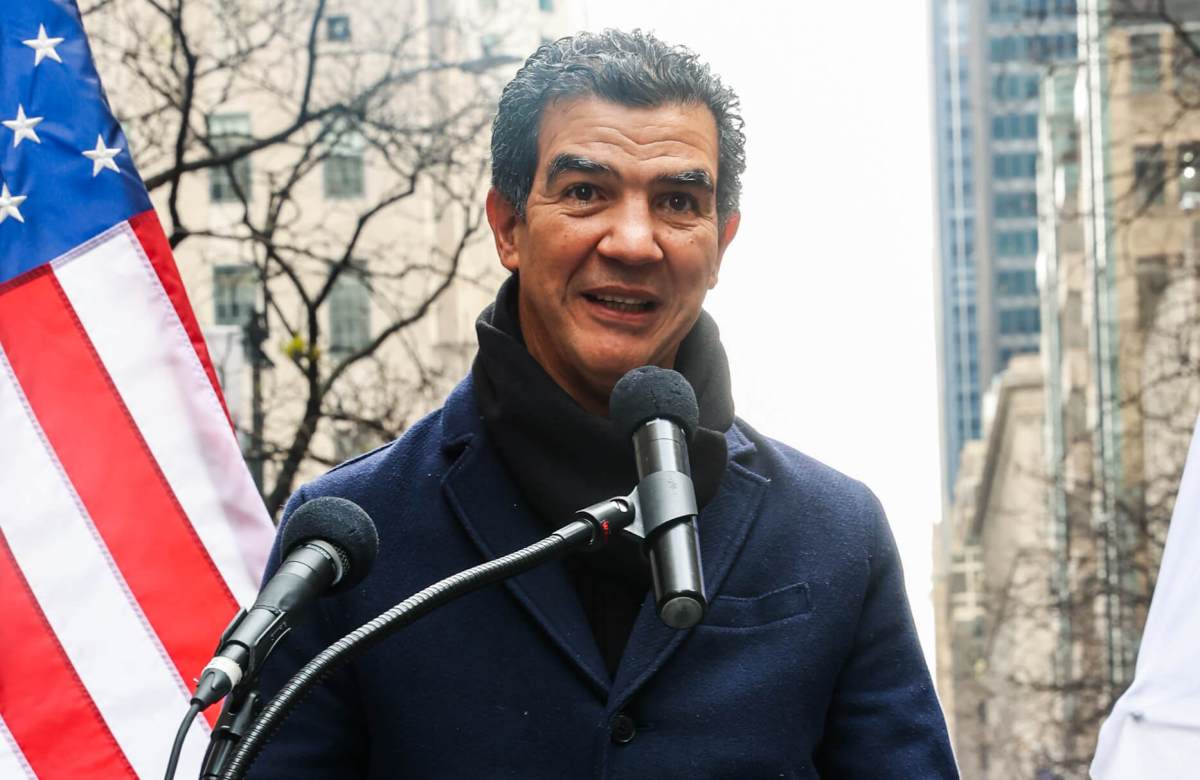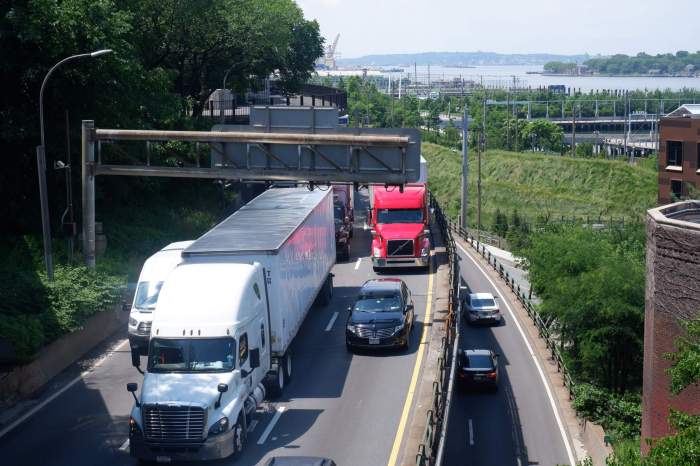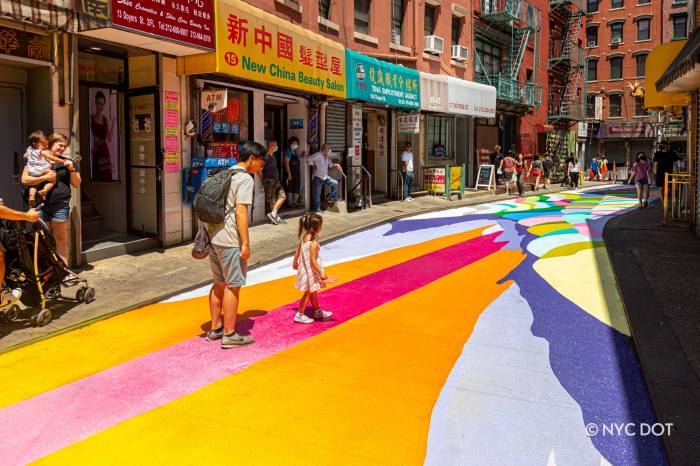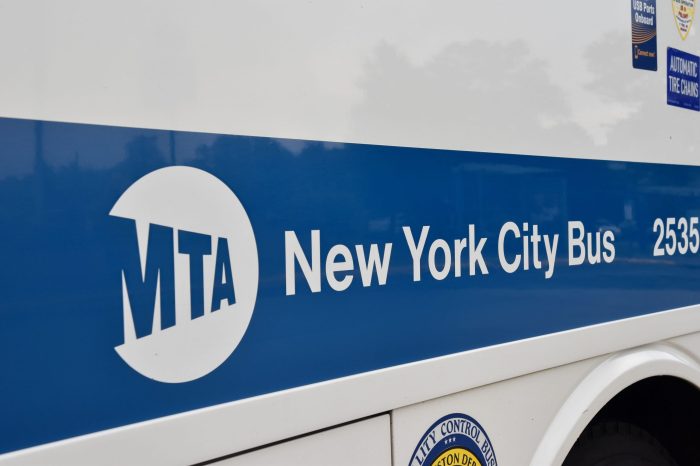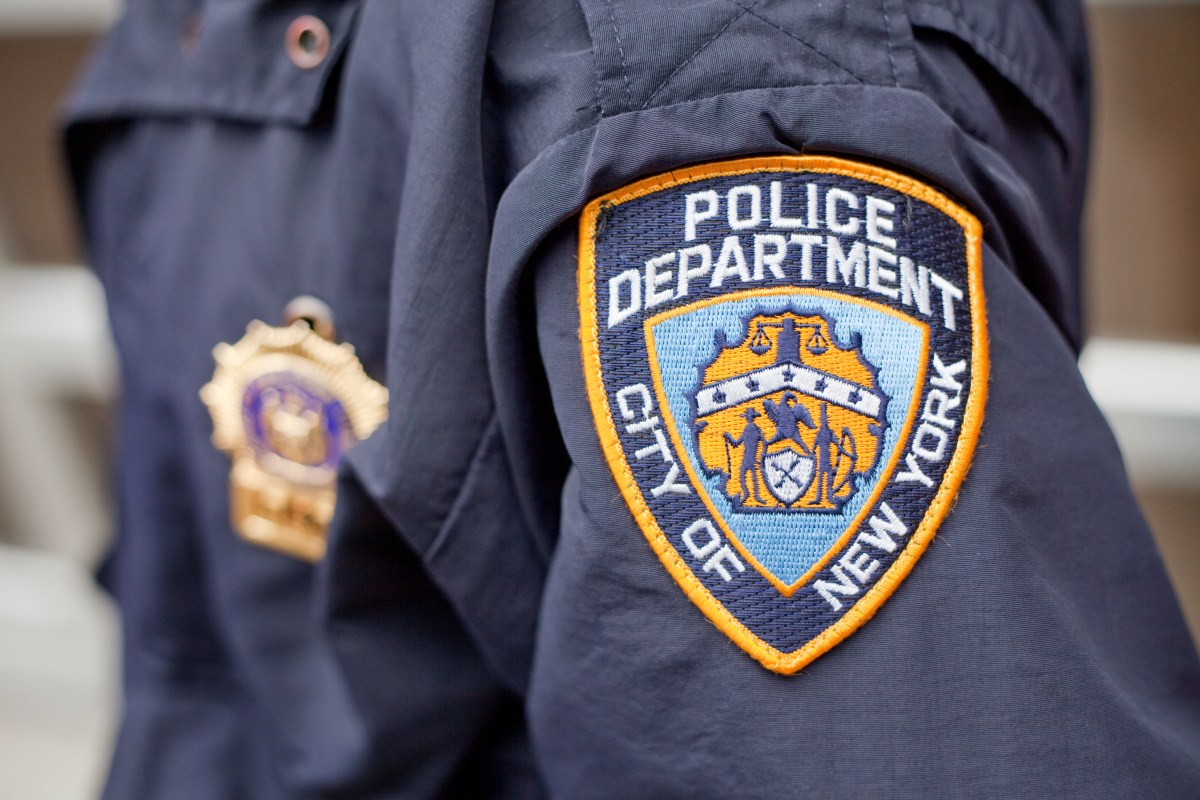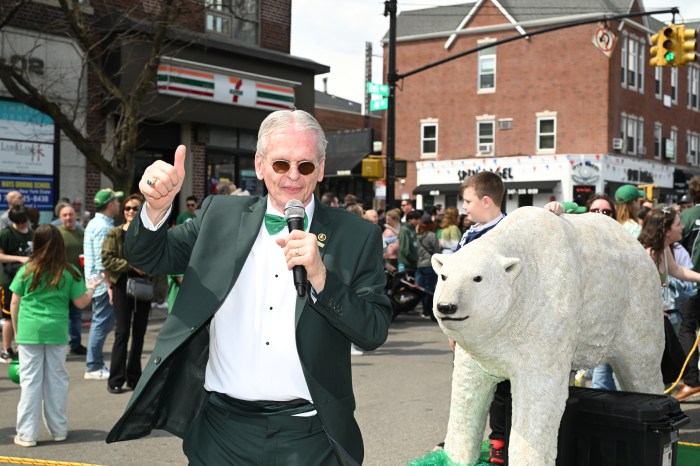New York City will replace half of its plastic-protected bike lanes with “sturdier” barriers during the first 100 days of the incoming Adams administration, soon-to-be Department of Transportation Commissioner Ydanis Rodriguez announced Tuesday, Dec. 21.
The move would mean reworking hundreds of miles of protected green paths across the Five Boroughs that currently separate car from bike traffic with frail one-foot sticks known as flex posts.
“We are going to commit to replacing 50% of all plastic protected bike lanes with sturdier and more permanent structures within the first 100 days,” said Rodriguez at a joint press conference with Mayor-elect Eric Adams officially announcing his appointment.
The uptown councilman wouldn’t say where he planned to put the stronger barriers or with what he wants to replace the plastic flappers, but said that federal dollars from President Joe Biden’s infrastructure package could help fund the scheme.
“Day one, we’re gonna be going to the agency and listening from the experts that we have there, people that have decades of experience, and we’ll be looking at where in the city should we get started,” Rodriguez said. “What we know is that there’s now funding at the federal level that is part of the infrastructure plan.”
Adams on Monday tapped Rodriguez — who chairs the Council’s Transportation Committee — to head DOT and replace Commissioner Hank Gutman come Jan. 1.
The city had 546 miles of protected bike lanes as of 2020 and the agency planned to add another 30 miles in 2021, but it is unclear how many of the roughly 576 miles are bordered by flex posts.
DOT’s definition of “protected” covers a wide range of ways cyclists are separated from car traffic, including completely detached paths on bridges or raised sidewalks, or lanes level with the rest of the road but shielded by concrete jersey barriers, flex posts, or a row of parked cars.
The plastic posts are easy to drive over for motorists and block the lanes, and cycling advocates have long called on the city to use more hard materials like concrete to keep pedalers safe, but DOT has continued to add them to new projects, such as Queens Boulevard.
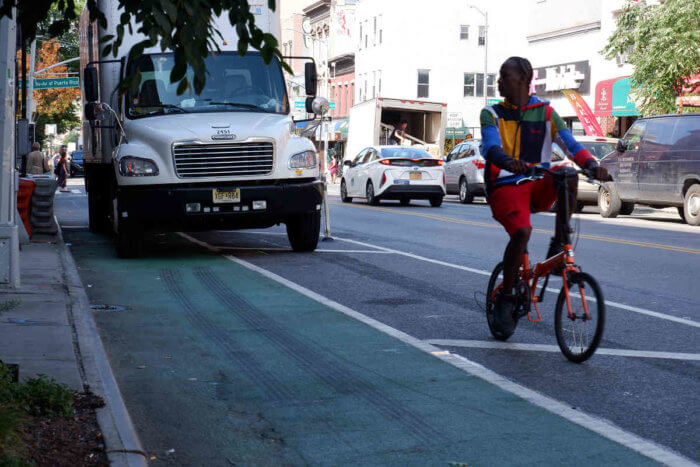
Other new bike paths like the highly-popular Brooklyn Bridge bicycle lanes are protected by a jersey barrier and a fence on top of it.
“People on bikes need real protection and we know truly protected bike lanes are what keep bike riders and other road users safe on our streets,” said Danny Harris, executive director of the street safety advocacy group Transportation Alternatives. “Upgrading the bike lane network is a much-needed and very promising first step from the next NYC DOT commissioner.”
Across the Hudson River in Jersey City, Mayor Steven Dunlop in October promised to buy jersey barriers for all their protected bike lanes to make them safer and save on the cost of replacing damaged plastic posts every time a driver destroys them.
We are in the process of buying jersey barriers for all of our protected bike lanes. We are planning on moving from flex posts to more substantial protection in 2022. Pricing is coming back now to make the change as we think it will be safer for the network + cheaper in long term https://t.co/7BNzKZcgqQ
— Steven Fulop (@StevenFulop) October 5, 2021
Adams has said he will roll out 300 miles of protected bike lanes during his tenure, or 75 miles annually during his four-year term, up from the 30 miles DOT says they are currently capable of building.
The mayor-elect on Tuesday added that he wanted to pedestrianize more streets, with a focus on lower-income areas.
“We’re going to expand pedestrian plazas where they’re not only localized in some communities, they’re going to be citywide,” said Adams. “What is happening in our central business district is not happening in Washington Heights, it’s not happening in South Jamaica, Queens, in Brownsville. The failure to connect the use of our streets is something that we’re going to ensure that it is equitable.”
Rodriguez also said he would work to give 25% of public space dedicated to cars to pedestrians, cyclists, and buses, inspired by Transportation Alternatives’ 25×25 plan, as well as work with the Sanitation Department to containerize trash that currently piles up on sidewalks, and expand bike share program Citi Bike to “all corners” of the city.



